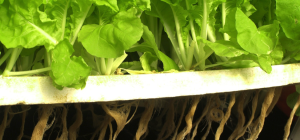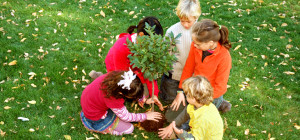 With the water wastage issue scaling new heights, smart and practical ideas to accomplish tasks with minimum usage of water has turned out to be the need of the hour.
With the water wastage issue scaling new heights, smart and practical ideas to accomplish tasks with minimum usage of water has turned out to be the need of the hour.
Gardening is one of the most common ways of household beautification, which, unfortunately, requires a large quantity of water. With the attempt for reduction of water consumption becoming the new norm, newer and more practical ways of gardening have been developed that fits the requirements perfectly. One of these methods is also known as waterwise gardening.
This type of gardening cuts down your water bill while retaining the beauty and elegance of a traditional garden.
Wondering how to achieve that for your house’s outdoor? The following steps will guide you through the process.
Have a Plan
This is a crucial step towards creating an exquisite waterwise garden.
Building a waterwise garden requires thorough planning. You would need to sketch the design of the layout of your garden before setting the plan into motion. Think about the exact area where you would like to build the waterwise garden. Avoid turning the lawn into a waterwise garden since it usually requires a lot of water.
Apart from the position, you would also need to think about the area available for the garden, sun shade, soil quality, wind directions, grouping of plants strategically to enhance the beauty of the garden, ways to water the plants and so on. Proper planning will save you time and money.
Choose the Plants Wisely
Just as your patio is incomplete without the right patio cushion storage, a waterwise garden would not hold its true meaning without the right plants.
It is important to choose plants that do not require much water. Succulents and drought-tolerant plants can be the right choices for your waterwise garden. It is advisable to choose the varieties of plants that are native to your area since these plants will have already adapted to your area’s climatic and soil conditions and, therefore, would not require excessive watering.
Waterwise plants require minimum watering as soon as they are established. The best method to optimize this would be by grouping the plants with similar watering needs together.
Prepare the Soil for Your Waterwise Garden
Preparing the soil before building your waterwise garden is important. For this, you would need to cultivate it regularly. Adding organic matter to the soil binds its components well and ensures that water penetrates through it appropriately. In other words, organic matter like compost, leaves, manures etc. increases the water-holding capacity of the soil by the right amount.
Adding mulch to the soil is one of the smartest ways to create an efficient waterwise garden. Organic mulch has the ability to reduce the water requirements by reducing the rate of evaporation of water, cutting back on unwanted, thirsty weeds and slowing down the process of erosion. It also enriches the soil considerably. You can choose from among a variety of mulch available.
Harvest Rain Water
Rainwater is the best free source of water. You can consider harvesting it in order to reduce the water wastage. You can consider placing rain barrels strategically to collect every drop of rain water. You would be surprised to know that for every inch of rain on a roof extending 1000 square feet can lead to the collection of approximately 600 gallons of rain water. The entire quantity can be harvested.
Water Right
While watering the plants is important, overwatering them can not only be the major cause of water wastage, but may also be detrimental to the life of the plants. A proper irrigation system can direct ample amount of water to the plants and is a far better option than sprinklers. A drip irrigation system can come in handy for optimized results since this directs the maximum amount of water to the roots of the plants.
The best time to water the plants is during the early hours of the day since the possibilities of evaporation are less. This also provides an entire day’s drying time for the plants, thus reducing scopes of fungal diseases.
You can create shades and windbreaks to provide optimal thriving conditions for your plants. Use proper fertilizers and pest controls to take proper care of your plants. Nothing can be more beautiful than an efficient waterwise garden in full bloom.
Contributed by: https://brookbend.com







